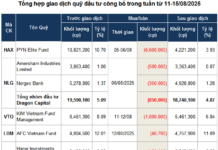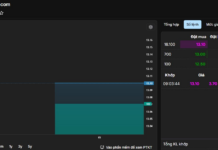Global markets have been steadily recovering since the beginning of the year, and businesses’ import and export activities have picked up as more orders are signed. However, the complex and geopolitical conflicts have negatively impacted trade activities. Businesses are facing a multitude of difficulties and risks.
Accordingly, since the beginning of the year, shipping goods by sea has become more expensive due to the conflict in the Middle East and operational restrictions on the Panama Canal. The attacks have severely disrupted international trade on the crucial route between Europe and Asia, which accounts for about 15% of the world’s shipping traffic.
In reality, the escalating tensions in the Red Sea have forced shipping companies to take detours, leading to higher shipping costs to and from certain import and export markets. This has significantly impacted Vietnamese businesses, particularly those trading with partners in the US, Canada, EU, and the UK.

Export businesses face the fear of “running out of orders”
According to many export businesses, order fulfillment has become more challenging since the second quarter of 2024. The disruptions in the Red Sea have posed risks to ASEAN economies. After three months of tensions in the Red Sea, the number of ships passing through the Suez Canal has decreased by more than 50% compared to December 2023. Spot freight rates have tripled for trade from Asia to Europe.
Vietnam, an economy with a high degree of openness, is directly impacted by these difficulties. The time it takes to ship goods by sea has been extended by tens of days, causing concerns for both exporters and buyers. Simultaneously, the impact is even greater since tensions are not limited to Russia and Ukraine but are also spreading to Iran and Israel.
Moreover, many manufacturing businesses are facing difficulties due to delays in importing raw materials. Prices of input materials have also increased. Even agriculture, which has been considered a pillar of the economy and a bright spot in the export sector in recent years, has seen its export businesses struggle in the first months of the year. The reason is the steep rise in both raw material prices and freight rates.
In addition to the shocks caused by the increase in raw material prices and freight rates, businesses continue to face the challenge of an “exchange rate hike.” Notably, the US Federal Reserve’s (FED) continued delay in cutting interest rates could prolong the impact on global economies. Higher interest rates in the US will spill over to other economies as the appreciation of the US dollar will disrupt trade and borrowing in USD. Economies that rely on importing goods, such as Japan, face the dual pressure of a stronger greenback and higher oil prices denominated in USD. Oil prices have already increased by about 20% since the beginning of December and could rise further if the Middle East conflict worsens.
For Vietnam, the sharp increase in the USD against the VND since the beginning of this year has caused headaches for businesses that rely on imported raw materials. This is because the cost of capital to import raw materials, machinery, and equipment has increased. Many businesses have signed contracts to import raw materials in advance, so when the exchange rate fluctuates upwards, it increases their import costs. If the USD continues to strengthen in the future, it will lead to a depreciation of the Vietnamese dong, higher inflation, and many negative consequences for businesses’ production and trading activities.
In reality, at many export businesses, most have only received orders for the second quarter of 2024, while the outlook for orders in the following months is not very promising.
Mr. Nguyen Van Khanh, Chairman of the Ho Chi Minh City Leather and Footwear Association, acknowledged that most businesses in the industry are still facing many difficulties in terms of orders. Many factories have cut workers due to a sharp decrease in export orders. According to a recent survey by the association, only about 40% of businesses in the association have orders until May or June. Most export orders are to Europe and the United States. The rest, from the third quarter to the end of the year, have yet to receive any orders.
In the context of escalating political tensions, export businesses once again face the risk of order disruptions. More worryingly, for labor-intensive export industries such as textiles, footwear, and wood, thousands of workers are at risk of losing their jobs.



































